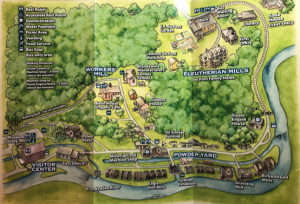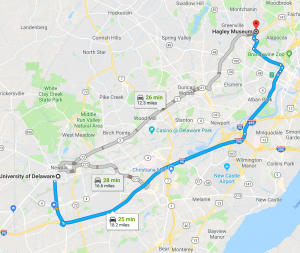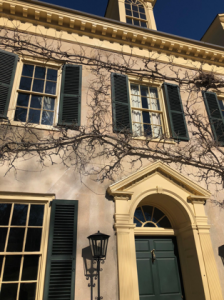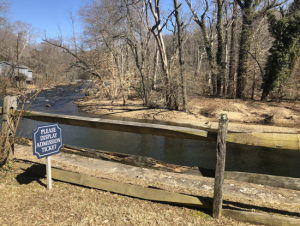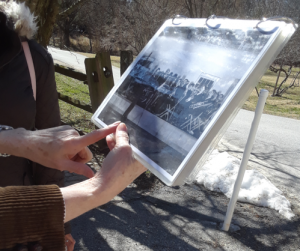The former site of the du Pont family’s Eleutherian Mills, a sprawling 235 acres, once a black powder factory and estate, is today an ode to historical and modern innovation, navigable by footpath and tour bus; With numerous nature-surrounded sites to explore, such as the Worker’s Hill Community Site, the Science and Discovery Center, and the du Pont Family Home. Visitors will be thoroughly entertained by the rustic environment and amiable staff!
Getting There from UD: 30 min (16 miles)
Address: 200 Hagley Creek Road
Wilmington, DE 19807
Price: $$ (consult website for discount prices)
Hours: Open daily 10 a.m. to 5 p.m. mid-March through early November
Open daily 10 a.m. to 4 p.m. early November through mid-March
Consult website for most up-to-date information
How Long to Spend: 2-3 hours (we recommend choosing beforehand the sections you’d like to visit)
Go Here if You: want to learn more about gunpowder, du Pont inventions, and the lives of du Pont family members and workers in the powder mill
Be Sure Not to Miss:
Eleutherian Mills Exhibit: Entering Hagley Museum and Library, visitors are welcomed, not only by employees in the visitor center, but also a small walk-through exhibit that acts as a precursor to the rest of the museum. The exhibit focuses on the history and establishment of the du Pont family and their business in gunpowder production. Starting out with a miniature diorama of “pre-du Pont” Hagley, the exhibit shows its development into an industrial site. The exhibit is equipped with interactive display cases to give you an inside look into the inner mechanisms of the gunpowder production in its prime.
The du Pont Science and Discovery Center: This separate exhibit highlights the many inventions of the du Pont Family Research Center with interactive games and hands-on experience. In this technologically-based portion of the estate, kids are encouraged to try on a space suit, put on a lab coat and examine samples of du Pont materials and even sit in a replica of Jeff Gordon’s #24 NASCAR!
The Worker’s Hill Community Site: Here staff in period dress interpret the lives of du Pont’s powder yard employees who lived within walking distance of their workplace. A woman in nineteenth century working-class garb will admit to you that this neighborhood known in its heyday as Free Park was more or less lovingly called “Flea Park” by its inhabitants. This and other fun facts can be sourced from the costumed characters who will happily break the fourth wall to answer your questions or flip with you through a book of photographs and tell you stories of the bad old days.
Know Before You Go: The Belin House Cafe, a historic Worker’s Hill building, now serves to refresh visitors with freshly-prepared foods featuring ingredients grown in the reconstructed organic du Pont home garden.
We Wish They Had:
Greater Accessibility: The visitor’s center offers an elevator between its first and second floors, but its bathroom is accessible only by a narrow staircase. In our experience, the estate and Worker’s Hill house museums made few accommodations for handicapped visitors.
Thought More about Diverse Audiences: The solution to the question of how historic house museums can reach a diverse audience can be a tricky one. The tour of the du Pont home is a place to think about this new perspective. It is informative – one can experience the atmosphere of an office, stroll through the gardens, and cherish the Georgian-style architecture. But we must remember that the provenance of non-Western items may hold limited significance. Therefore, both the historic house and the audience should strive to understand these artifacts, such as the Persian-style rug, the Bombay ebony chair, and the Chinese iron table within the home.
Opportunities for Additional Learning:
If a visit to the Hagley Museum sparks an interest in the history of American business and industry, you may be further engaged by Hagley’s Research Library, which opens its doors to the public on the second Saturday of every month. For non-local visitors wishing to make use of this resource, much of the Library’s collection lives online.
Special Events to Look For:
Hagley has cannon-firing demonstrations (included in admission fee), wedding open houses at the Soda House, and fireworks! Lectures by authors and scholars are hosted occasionally.
Helpful Links:
Consult the website for current hours, directions, and more details: https://www.hagley.org
Social Media:
Facebook: https://www.facebook.com/HagleyMuseumandLibrary/
Instagram: https://www.instagram.com/hagleymuseum/
Tumblr: http://hagleyvault.org/
Twitter: https://twitter.com/hagleymuseum
Youtube: https://www.youtube.com/user/HagleyMuseum
Special Events: https://www.hagley.org/plan-your-visit/calendar
Eleutherian Mills Exhibit: https://www.hagley.org/plan-your-visit/what-to-see/exhibits/visitor-center-first-floor
du Pont Science and Discovery Exhibit: https://www.hagley.org/plan-your-visit/what-to-see/exhibits/dupont-science-and-discovery
du Pont Family Home: https://www.hagley.org/plan-your-visit/what-to-see/exhibits/dupont-science-and-discovery
Worker’s Hill: https://www.hagley.org/plan-your-visit/what-to-see/exhibits/workers-hill-community
Brandywine River Museum of Art Brandywine Zoo Delaware Children’s Museum Delaware Art Museum Hagley Museum and Library Historic Odessa Longwood Gardens Newark History Museum Winterthur Museum, Gardens and Library




